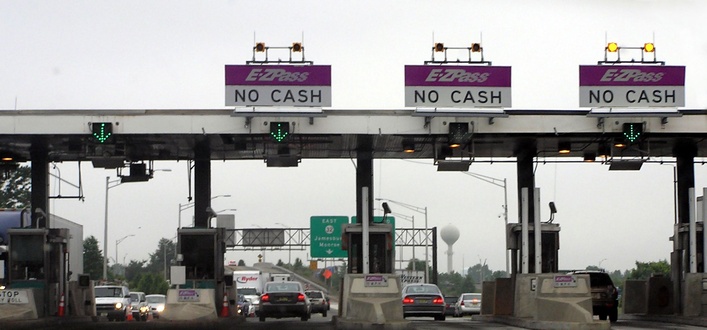2. Applications of RFID
RFID technologies are already widely employed. In many regions of the United States and other countries, automobile tolls are efficiently and accurately collected with minimal traffic delays using radio-enabled toll booths (Figure 3) and compact, inexpensive transponders that can be readily mounted to the car windshield (Figure 4). In the US, the transponders usually contain an identifying number, which is read by a reader antenna mounted on the gantry above the toll booth. A network is used to verify that the number corresponds to an active toll account, a debit entered in the account, and the car allowed to pass, all within a much shorter time than that required for manual collection of cash and distribution of change.

Figure 3: Tollbooths equipped for automated toll collection.

Figure 4: A robot equipped with RFID reader and two antennae to assist navigation.
The reader may infer that the wide variety of applications depicted here could require distinct technological approaches, and this is indeed the case. Let's take a look at the different approaches used to obtain the identity of an object using radio communications.